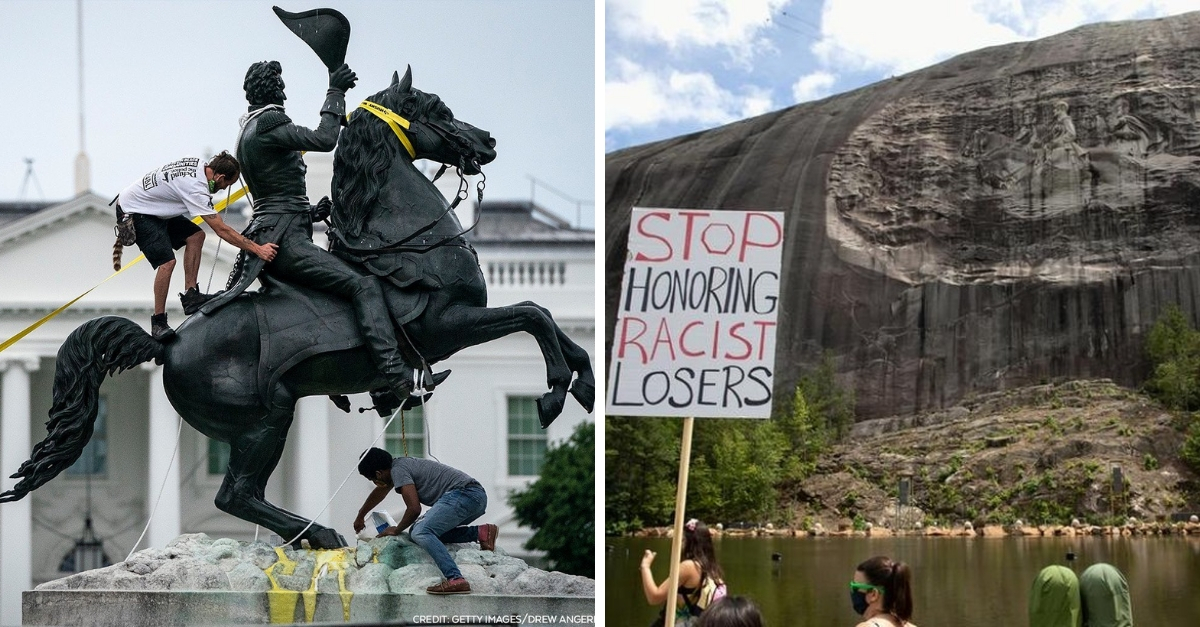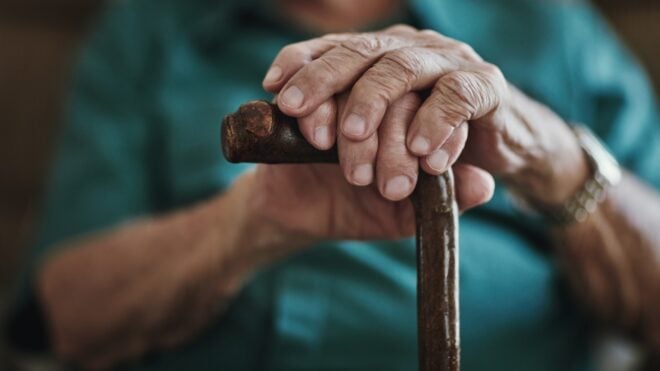
There's an important national conversation occurring around historical monuments in our country. Statues and other dedications around the US are being taken down. Some are being removed at the behest of state officials. Some are coming down at the hands of protesters.
Many of these commemorations celebrate important figures in our country's history. There are also many that honor complicated and problematic figures in history. The decisions on how to handle such monuments aren't easy.
Some believe the removal of these markers is historical erasure. Others argue that there's a clear line between celebrating a figure and educating yourself about one. For that reason, many have suggested the relocation to museums where possible.
We're at a time in our country's history where we're taking a hard look at ourselves. These monuments are among the many aspects of our history and how we've handled it that have to be reckoned with.
The United States Capitol
Each state is allowed to honor two citizens with statues in the National Statuary Hall Collection inside the United States Capitol. Several Confederate figures are among them, some in their Confederate Army uniforms.
Virginia has a Robert E. Lee statue. North Carolina features Zebulon Baird Vance. Arkansas has Uriah M. Rose. Joseph Wheeler represents Alabama. Georgia has Alexander Hamilton Stephens. Wade Hampton III is shown in South Carolina. Jefferson Davis and James Zachariah George are there for Mississippi.
Edmund Kirby Smith is also shown in Florida but has been slated to be replaced with African American educator and civil rights advocate Mary McLeod Bethune upon completion of the statue.
Arlington National Cemetery
Arlington National Cemetery features a Confederate Memorial by the United Daughters of the Confederacy. Overlooking the cemetery is the antebellum home of Robert E. Lee.
The National Park Service describes the home as "honor[ing] him for specific reasons, including his role in promoting peace and reunion after the Civil War. In a larger sense, it exists as a place of study and contemplation of the meaning of some of the most difficult aspects of American History: military service; sacrifice; citizenship; duty; loyalty; slavery and freedom."
Mount Rushmore
Mount Rushmore, an incomplete dedication to the founding fathers, is located on Sioux land illegally seized by the United States government. The men featured on the mountain each have a complicated history in their own rights. The artist who began the project, Gutzon Borglum, had also developed a sympathetic relationship with the Ku Klux Klan.
Stone Mountain
Stone Mountain, also created by Gutzon Borglum, is a dedication to Confederate leaders. It features Jefferson Davis, the only president of the Confederate States of America, alongside Confederate Generals Robert E. Lee and Stonewall Jackson. The site, just outside of Georgia, is also significant to the KKK. It was the site of the hate group's first cross burning in 1915.
Christopher Columbus
There are statues celebrating Christopher Columbus all over the country. One in Baltimore's Inner Harbor was recently taken down by protesters. Two other prominent ones, in New York's Columbus Circle and Union Station in Washington, DC, have been targeted by demonstrators.
Columbus' legacy has been greatly disputed in recent history. Not only did he not discover the Americas, but his relationship with Native Americans has been rewritten in history books as amicable, where it was actually truly oppressive and violent.
Don Juan de Oñate Statue
Don Juan de Oñate was a conquistador who colonized the land that is present-day New Mexico. He oversaw the execution of hundreds of Acoma Pueblo people. Though he played a major role in establishing Santa Fe and El Paso, his cruel reign almost wiped out the Acoma Pueblo people.
Nathan Bedford Forrest Bust
Nathan Bedford Forrest was a Confederate general who was the first Ku Klux Klan Grand Wizard. Not only is a bust of Nathan in the Tennessee State Capitol, but the state also has a holiday in his honor. One of Nathan's own descendants has called for the removal of all celebrations of the man.
Robert C. Byrd Dedications
There are quite a number of roads and buildings named after Robert C. Byrd throughout West Virginia. The senator was a one-time KKK member who later regretted his affiliation with the group. Though his views changed, his language did not. He used racial slurs in a 2001 interview.
Edmund Pettus Bridge
The Edmund Pettus Bridge is the bridge to Selma that was the site of Bloody Sunday in 1965. It achieved landmark status for that reason, but critics believe the name needs to be changed. Edmund Pettus was the last Confederate general to serve in the Senate. He also was a Grand Dragon of the Alabama Ku Klux Klan.
Ninian Edwards Statue
A statue of Ninian Edwards, the only governor of the Illinois Territory who later became the third governor of Illinois, resides in Edwardsville, Illinois. Not only was Ninian Edwards a slaveholder, but he also sent Illinois militia to battle Native Americans in the War of 1812 and the Winnebago War.
A group is calling for the removal of the statue and renaming of Ninian Edwards Plaza, but they are not looking to change the city name.
Andrew Jackson Statue
The statue of Andrew Jackson at the Battle of New Orleans is in Lafayette Square in Washington, DC. It was the first bronze statue cast in the country and the first equestrian statue in the world to be balanced solely on the horse's hind legs. While it has historical and artistic significance, Jackson himself isn't quite a model citizen.
The seventh president of the United States has long been criticized for driving Native Americans from their land in the Trail of Tears.
Robert Covington Statue
Robert D. Covington was an Illinois man who is credited with settling the Washington area of Utah for Brigham Young. Though he was a bishop who established the area, he was also a slaveholder who managed a plantation. The city's mayor has stated he has no intention to take the statue down despite numerous calls to do so.




